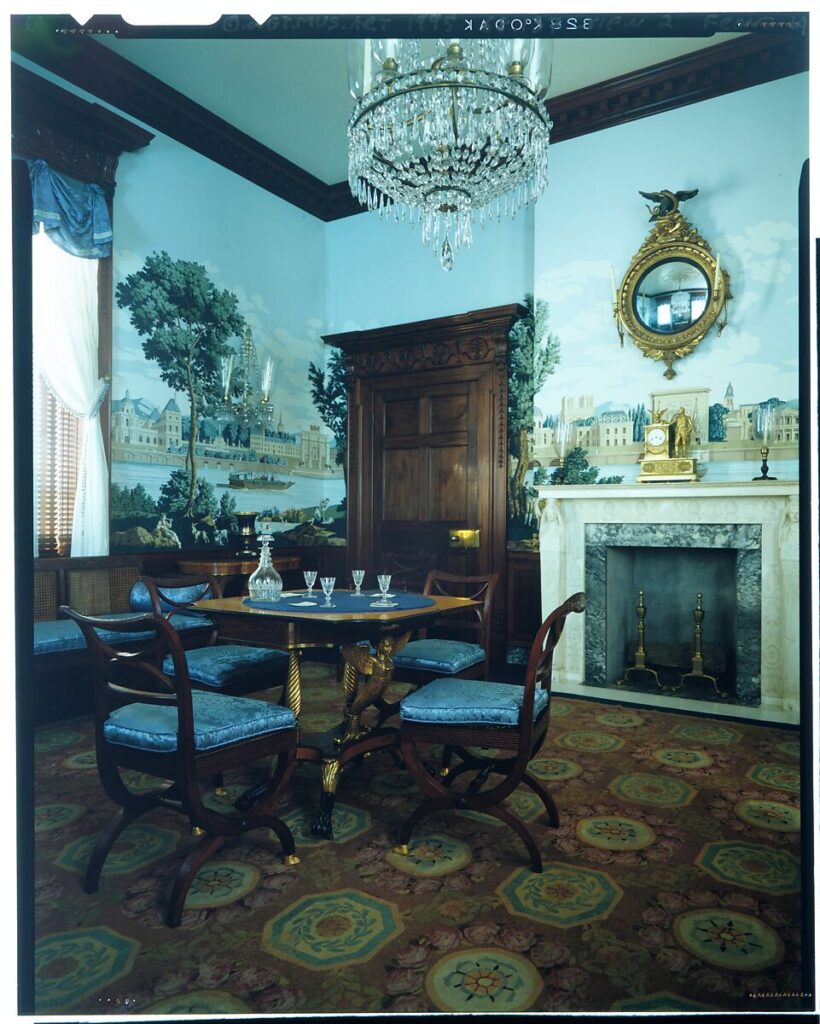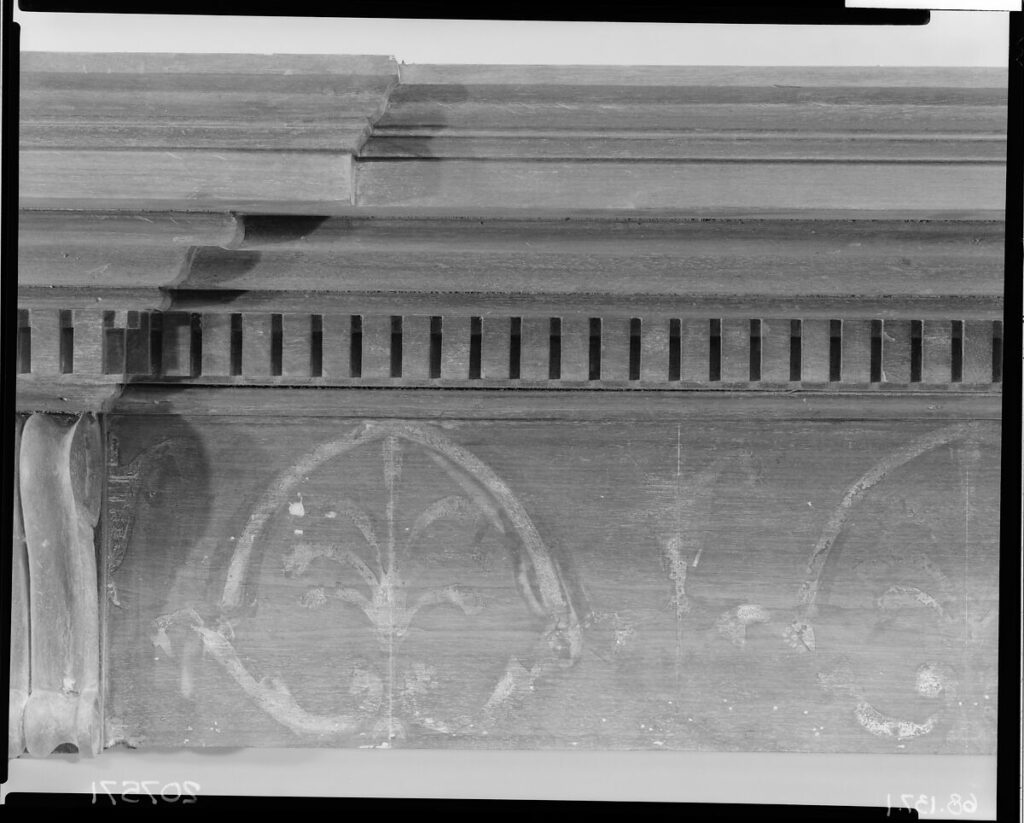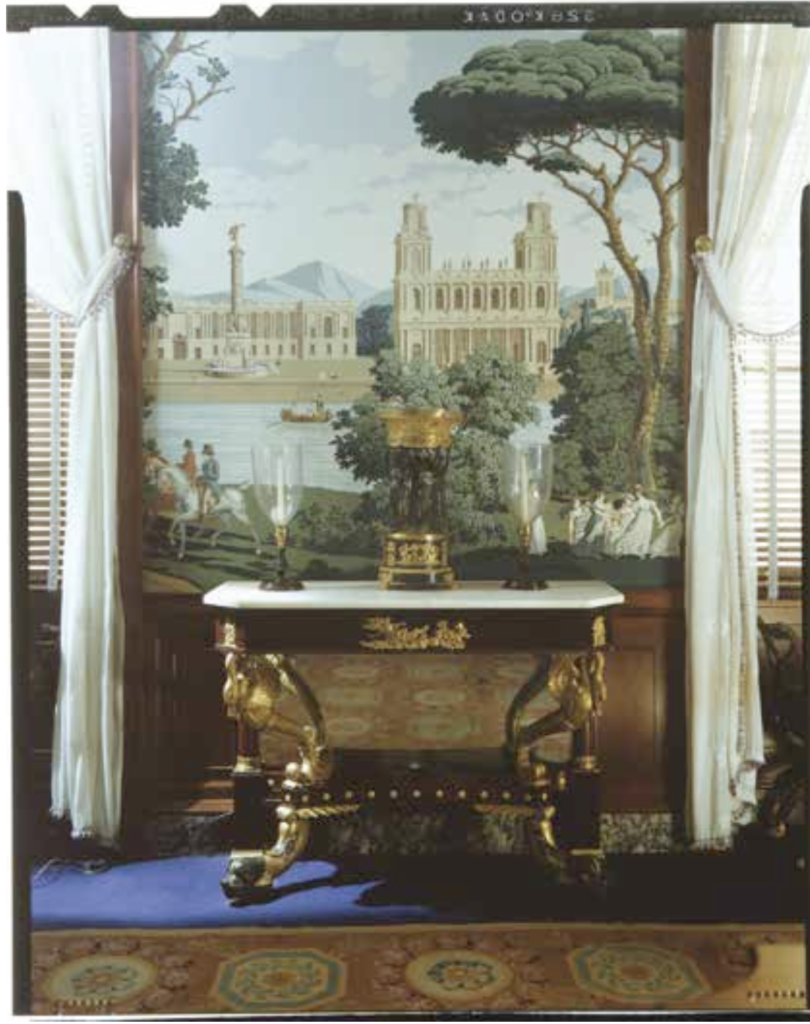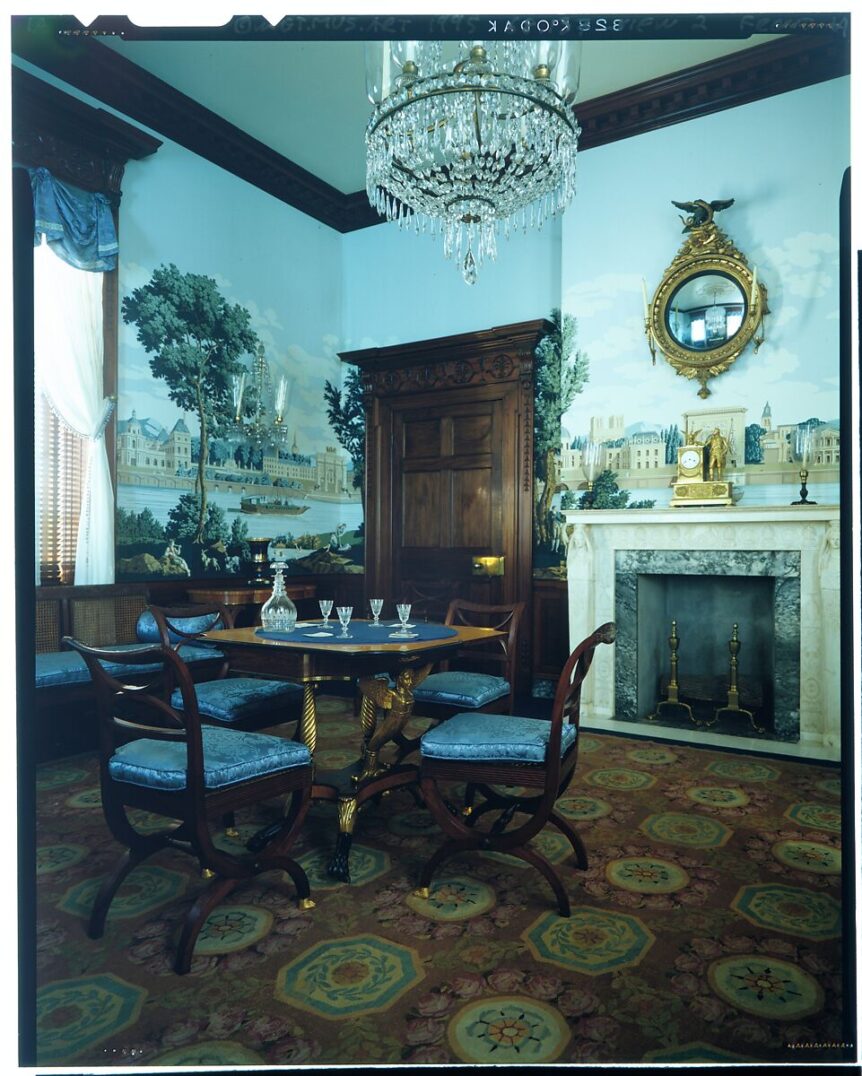Period rooms have always told stories. The question is—whose?
Who are you in a period room? It’s a tricky question, and it depends in part on your personal understanding of how time travel might work. You could imagine yourself exactly as you currently are, teleported back through time to, say, the Federal period or the Gilded Age. You might revel in certain aspects of it: the clothing and hairstyles, the furniture, the food and drink, the humor and music, novels and poetry, even the history unfolding around you. But more than likely, you might be ready to hop back into the time machine after about ten minutes of life in the nineteenth century.

Viewed another way, you could contemplate your own ancestors, especially if you live in the same city or town they did. But here’s the tricky part: would all your ancestors have ever been in the same room together? Were they all members of the same ethnic group, religion, social class, or community? Mine certainly weren’t, and even if they had all lived near each other, traveling back to the nineteenth century to see them in action would require a split-screen spy technique that could monitor the activities “upstairs” and “downstairs” at the same time. This is true for lots of Americans, and it’s one of the most rewarding aspects of studying your family history. When you walk into a room designed to re-create the setting and style of another time and place, are you encouraged to meet yourself there? If so, are you a guest, or are you bringing the guests their tea? Are you the man married to the hostess, or the man who carved the furniture? What if somehow you were descended from all these people? The room in question, then, would symbolize something very different to each of your forebears depending on whose experience you’re considering. For a businessman, a prominent hostess, a household maid, or an enslaved servant, the room could be a refuge, a stage set, a workplace, even something close to a prison.

The challenge and promise of a period room is to have all these radically different experiences simultaneously “on view” without changing a single candlestick; you need to know what happened there. Period rooms that depict the luxury interiors of the past are dazzling, and in a strange way it’s precisely because they succeed in conveying an experience of material splendor that they can simultaneously fail to tell true social history. That’s why it’s so exciting that with the recent reinstallation of the American Wing at the Metropolitan Museum of Art, there is a new emphasis on the social dimension of the works of art and period rooms on view, providing context for understanding things that have been in plain sight for decades.
A recent video on the Met’s Instagram feed explains how features of the Richmond Room tell a story about the spoils of the Atlantic slave trade—and always have. Amelia Peck, Marica F. Vilcek Curator of American Decorative Arts, explains in the video that as curators reflected on the displays of decades past, it seemed increasingly urgent that they present more robust background information.

“It became very clear that a lot of our rooms, especially the southern rooms, had no representation of the people who lived there,” Peck says, “so we’re trying to show a much broader picture of the stories of the people who had no voice, who were enslaved or indentured, and the women who also contributed to the larger stories.” The Richmond Room was re-created from the parlor of a house built in 1810 and 1811 in Richmond’s elite Court End neighborhood for prominent local attorney William Clayton Williams. It offers a bracing dose of the Federal style, with furniture by Duncan Phyfe and Charles-Honoré Lannuier, as well as a reproduction of scenic wallpaper of a type popular in such houses. It’s also clad in a deluxe material, the significance of which might not immediately catch a visitor’s attention: intricately carved mahogany. “That in itself tells a story,” Peck says in the video. As she explains, mahogany was the “it” material of the day for paneling and furniture. Tough and resilient thanks to its origins in humid climates, it was harvested from Caribbean islands that were key areas in the economy of the Atlantic world. The trees were felled and the wood was transported primarily by enslaved laborers.
That the Richmond Room has so much carved mahogany is a clear sign that the Williams family’s wealth was owed in part to enslaved labor and the slave trade itself. Indeed, research has revealed that William Clayton Williams enslaved at least seventeen people at his home: “Billy, John, George, Willis, Mariah, Carter, Polly, Easter, Mahala, Isabella, Mary, Henry, Sukey, James, and two men who were both named Thom. The family also enslaved at least forty additional individuals, whose names are presently unknown, to cultivate their other land holdings, which included a large agricultural estate of nine hundred acres and mill in nearby Goochland County.”
The woodwork in the Richmond Room was salvaged by architect Thomas Waterman before the house was demolished; he sold it to Pennsylvania antiques dealer Joe Kindig Jr., who presented it to the museum in 1968, where it was accepted by curator Berry B. Tracy (1933–1984). At the time, Tracy described the Richmond Room as “a revelation to the creative taste and genius of the craftsmen of the Federal Period in America”—and this is no doubt as true today as it was over fifty years ago. But there were more people in the room than just the Williams family, and with new scholarship and interpretation by the curatorial team, we can begin to learn more about who they were. They were there all the time; all we needed to do was read the signs.

